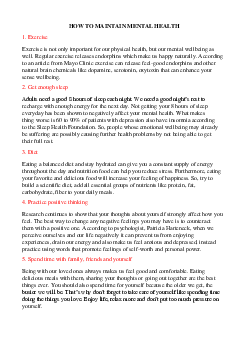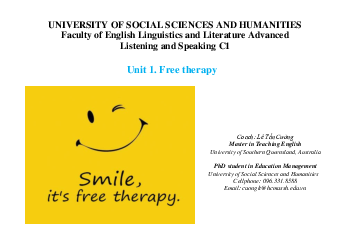


Preview text:
LENDING A HAND /MICROLOAN
1. What are the advantages of borrowing money from family or friends?
Some of the advantages of borrowing money from family or friends are:
They may offer loans without security or accept less security than
banks. They may lend funds interest-free or at a low rate.
They may agree to a longer repayment period or lower return on their investment than formal lenders.
They already know your character and circumstances and so are less likely to need a detailed business plan.
You maintain your ownership in the business and do not have to share profits or decision-making with them.
2. What are the advantages of borrowing money from the bank?
Some of the advantages of borrowing money from the bank are:
You can make large purchases that are necessary for your business, such as
property, vehicles, and machinery.
You can negotiate for the best terms that suit your needs, such as the loan term,
the fees, the interest rates, and the application requirements.
You can improve your credit score by making timely payments and showing
your trustworthiness as a borrower.
You do not risk losing your business ownership or control to the bank, unless you default on the loan.
3. Have you ever done charity work? Explain your answer.
Yes, I have done some charity work in the past. I have volunteered for a few organizations
that help people in need, such as food banks, homeless shelters, and animal shelters. I enjoy
doing charity work because it makes me feel good to contribute to a cause that I care about.
It also gives me a chance to learn new skills, meet new people, and make a positive difference in the world.
4. Can we break the cycle of poverty? Why (not)?
I think we can break the cycle of poverty, but it is not easy. The cycle of poverty is caused by
many factors, such as lack of education, health, and opportunities, as well as social and
economic inequalities1 To break the cycle, we need to address these root causes and provide lOMoAR cPSD| 41487872
people with the resources and support they need to escape poverty and achieve their
potential2 Some of the possible solutions include investing in education, health care, and
infrastructure, promoting fair trade and human rights, empowering women and minorities,
and supporting social movements and innovation. I believe that everyone deserves a chance
to live a dignified and fulfilling life, and that we can work together to end poverty and
create a more just and sustainable world. MICROLOAN
A microloan is a small amount of money that is lent to a low-income entrepreneur or a
small business owner, usually in developing countries, to help them start or grow their
business. Here are some phrases about microloan that you might find useful:
Microloans are a way of empowering the poor and giving them a chance to improve their lives and communities1
Microloans can help create jobs, reduce poverty, and promote social and environmental sustainability
Microloans are not just about money, but also about providing training, mentoring, and support to the borrowers
Microloans are based on trust and mutual respect, rather than collateral and credit scores.
Microloans are not charity, but rather an investment in human potential and dignity.
COMPARE LOAN AND MICROLOAN
A loan and a microloan are both ways of borrowing money for a business, but they have some differences.
Amount: A loan can be any amount of money, from a few thousand to millions
of dollars. A microloan is usually a small amount of money, up to $50,000
Purpose: A loan can be used for any business purpose, such as buying equipment,
expanding operations, or refinancing debt. A microloan is typically used for starting
or growing a small business, especially in developing countries or underserved communities lOMoAR cPSD| 41487872
Qualification: A loan requires a good credit score, a solid business plan, and
sufficient collateral. A microloan is more flexible and does not rely on credit score
or collateral. Instead, a microloan may require a business training, a mentorship, or a group guarantee.
Interest rate: A loan has a variable or fixed interest rate, depending on the lender
and the market conditions. A microloan has a higher interest rate than a loan, because
it is riskier and more costly for the lender. However, a microloan may still be cheaper
than other alternatives, such as credit cards or payday loans
To summarize, a loan and a microloan are both forms of financing, but they differ
in the amount, purpose, qualification, and interest rate. Depending on your business
needs and situation, you may choose one or the other.




